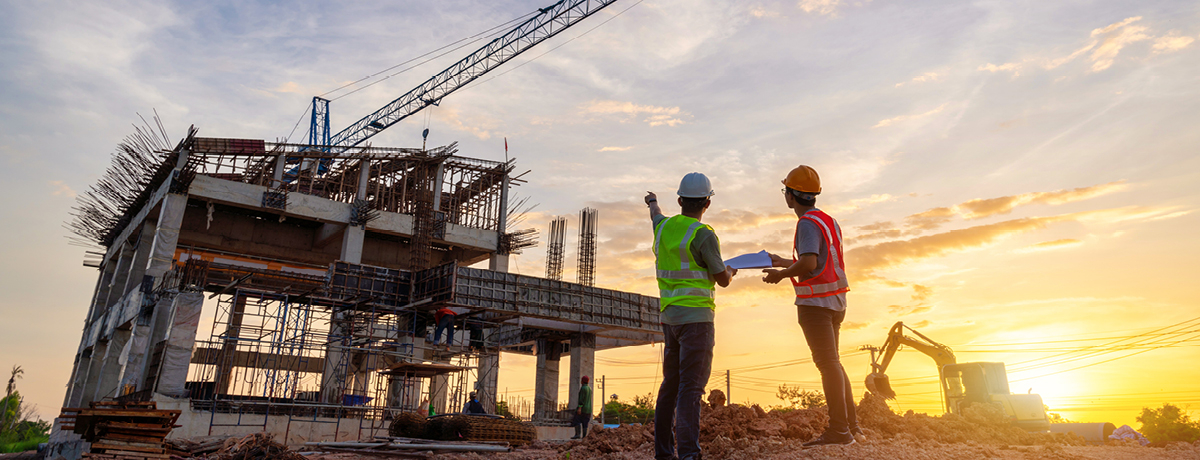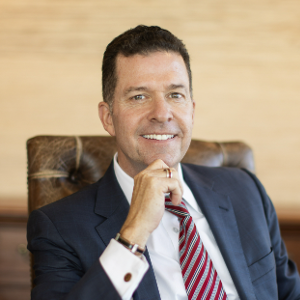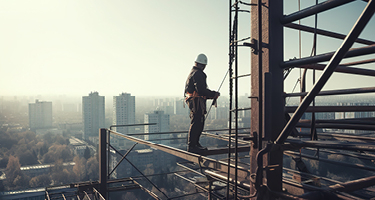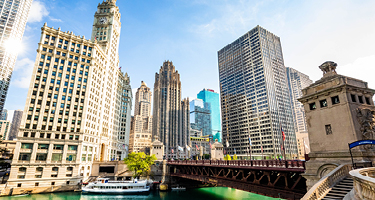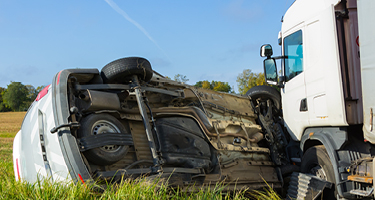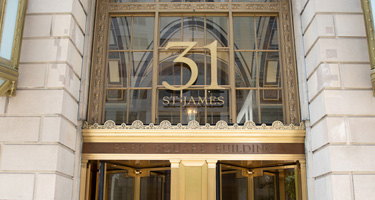A CONSTRUCTION SITE can be a dangerous place to work. Sites that prioritize worker safety require numerous, varied and intertwined precautions. The lawyers at Block O’Toole & Murphy often represent construction workers who have been injured, as well as families of workers killed in accidents on the job. Each case underscores the grave importance of site safety. Providing the right equipment, training and planning—and rigorously following regulations—are all vital to protecting the lives of construction workers.
Site Safety Is Not Limited to PPE
A common misconception, even within the industry, is that personal protective equipment (PPE) suffices as a pillar of workplace safety. This includes goggles, gloves, earplugs, face shields, respirators and hard hats. The National Institute for Occupational Safety and Health (NIOSH), in fact, outlines a hierarchy of controls that places PPE at the bottom, ideally functioning as workers’ last line of defense. The best strategies for minimizing risk appear much earlier in the timeline of any project.
The Occupational Safety and Health Administration (OSHA) recommends incorporating safeguards into the planning stages. This corresponds with NIOSH’s aforementioned hierarchy of controls: The first priority should be eliminating hazards altogether.
The individuals responsible for site safety can limit accidents by calling regular “toolbox meetings.” These sessions enable workers to learn about any safety issues unique to their job site and get an overview of what they’ll be working on and how best to accomplish the job securely. One hurdle we often confront is that most people talking in such meetings are doing so in English but many of the workers speak a different language. Proper toolbox meetings can make a difference in workplace safety at construction sites.
Reducing Falls on Work Sites
Falls are the most common hazard construction workers face. OSHA highlights the critical (but perhaps surprising) fact that falls from even as little as four to six feet can be deadly. As such, flooring is an often overlooked safety measure. For instance, when a staircase is erected for the purpose of construction work, it’s legally considered a safety device. A worker using it to access a basement renovation, say, might fall and suffer serious head injuries. The stairs may have been fabricated with shoddy materials and inferior craftsmanship, or without railings or slip-resistant flooring.
In some cases, workers can fall through poorly made or badly placed temporary flooring. We also see accidents in which existing flooring is insufficiently supported. This is sometimes linked to other work on the site; if the pounding of demolition in the basement has rattled the foundation, it can trigger a cave-in on the first floor. Another example: an errant aperture in the floor causes an unsuspecting worker to fall through.
Scaffolding presents inherent fall risks. While it’s usually unavoidable at most construction sites, scaffolding should be secured to ensure its stability. Likewise, built-in-place ladders and stairways are a better choice than portable versions.
Some built-in forms of fall prevention have a conveniently small footprint. Cast-in sockets, for example, provide tiny slots in stairways for easy guardrail installation. Steel beams used in elevated platforms can be fitted with comparable holes for the threading of guardrail cables. Guardrails themselves can sometimes be made from steel plates which are then built into the walls of the finished structure. Finally, permanent roof anchors are compact fasteners that serve as vital tie-off points for roofers.
Harnesses and nets can be useful as a final safety measure in the event of a fall. However, nets require careful placement to be effective. A safety harness known as a Personal Fall Arrest System (PFAS) should be attached to a lifeline that can support 5,000 pounds. While one person weighs only a fraction of this, the total force of a fall includes the physics of rapid deceleration. Like any equipment that may affect a worker’s survival, harnesses should be inspected routinely for signs of wear or damage. Finally, a harness is only as strong as its tie-off point. Supervisors should make sure there are enough sturdy tie-off points to which workers can secure their harness.
Contending with Excavation Hazards
Falls are common throughout the construction industry, but excavation is the most dangerous aspect of the job. Disturbingly, its death rate is double that of the wider industry thanks largely to the constant threat of cave-ins. Even trenches just four feet deep require exit systems like ladders.
Several engineering solutions can mitigate cave-in risks. A technique known as “benching” carves out layered steps within the earth; “shoring” braces the sides of an excavation with materials such as aluminum or wood; and “shielding” describes boxlike structures that protect workers in the event of a collapse.
To help predict the chance of a cave-in, trained personnel are required on site to monitor and analyze soil conditions. As the American Society of Safety Professionals (ASSP) stresses, construction sites can change significantly over the course of even a single day. This is particularly true for excavation, where oxygen levels, fumes and changing weather must all be monitored.
To reduce underground work done by humans in the first place, hydraulic jacks can be used to widen trenches safely from above. Trenchless technology can also complete certain tasks through mechanical tunneling.
Addressing Administrative Problems
Management negligence is always an urgent concern for construction workers. Hazards can arise from inadequate training, enforcement, rotating employees among different projects and the order in which work is done. Many serious accidents, regrettably, are caused by managers rushing timelines—which stems from the menace of an employer or general contractor placing profits over people.
Unionized workers are less exposed to accidents, as their projects have better oversight. Regardless, the New York City Department of Buildings (DOB) has reported hundreds of injuries and dozens of fatalities in construction over the past seven years. Most of those victims were nonunion, lacking the protection of organized labor behind them. They’re often undocumented workers who might recognize dangers on site but who lack the power to demand changes or refuse work.
When immigration status is a source of anxiety for such plaintiffs, part of our job is to assuage their fears: to let them know they have rights and that their status is not an impediment to bringing a case. To help comfort them, we show how we’ve protected people in similar situations before. Unfortunately, the grievous exploitation of these workers, paired with an increase in major construction projects, has led to many accidents in New York as the city and its skyline continue to expand.
Meanwhile, regulators struggle with considerable roadblocks. Organizations tasked with the responsibility of inspecting sites, such as OSHA and New York’s DOB, are hindered both by staffing shortages and ineffectual deterrents to noncompliance. A paucity of inspectors coupled with more construction means each officer must conduct more visits per day than previously. Any violation uncovered consumes considerable additional time.
Regulatory institutions can fine wrongdoers, but legally, nothing substantial automatically happens after an accident. In the case of a wrongful death, no consequences ever match the severity of the injustice. The processes to amend safety guidelines are also moving slowly; the industrial code that covers construction work is decades old.
No matter the size of a project, it’s imperative for everyone involved to follow a comprehensive safety plan. Time and again, employers place the bottom line above all else, forgetting that human lives hang in the balance.
Daniel P. O’Toole is a partner at Block O’Toole & Murphy and co-chair of the Labor Law Committee for the New York State Trial Lawyers Association (NYSTLA). His career has been marked by historic results, including $110 million and $32 million verdicts; he has handled construction accidents, motor vehicle accidents and other serious injury cases for more than three decades. In his longtime role at NYSTLA, O’Toole remains dedicated to advancing worker safety.


